Table of Contents
Introduction
According to Disease Statistics, Diseases cover a broad spectrum of conditions that disrupt normal bodily functions with specific symptoms and physiological changes.
They range from infectious diseases caused by microorganisms to non-communicable diseases influenced by lifestyle, genetic factors, and autoimmune disorders triggered by abnormal immune responses.
Diseases spread through direct contact, contaminated objects, or airborne transmission. Impacting global health significantly by increasing healthcare costs and reducing productivity and quality of life.
Prevention involves vaccinations, public health measures, and lifestyle adjustments, while treatments include medications and surgeries.
Genomics and digital health advances are transforming disease management, yet challenges like antimicrobial resistance and healthcare accessibility remain.
Understanding these fundamentals is crucial for globalizing effective healthcare and public health strategies.
Editor’s Choice
- Long-Term Care Market accounted for USD 1100.7 Billion and is expected to reach around USD 2168.1 Billion in 2032. Between 2023 and 2032, this market is estimated to register a CAGR of 7.2%.
- In the African Region, DALYs increased from 56,186.6 in 2020 to 59,266.6 in 2021.
- The total disease burden by cause has shown notable trends from 2015 to 2021. In 2015, injuries accounted for 10.12% of the total disease burden, communicable, maternal, neonatal, and nutritional diseases contributed 29.43%, and non-communicable diseases (NCDs) made up 60.46%.
- The leading causes of death globally are varied, with ischaemic heart disease being the most significant, accounting for 7.25 million deaths or 12.8% of total deaths.
- In 2021, the share of the total disease burden worldwide was dominated by various causes. Cardiovascular diseases were the leading cause, accounting for 14.9% of the total disease burden.
- As of 2012, the global distribution of deaths due to non-communicable diseases (NCDs) was dominated by cardiovascular diseases, which accounted for 37% of all NCD-related deaths.
- The global disease burden from communicable, neonatal, maternal, and nutritional diseases has shown varying trends from 2017 to 2021, measured in Disability-Adjusted Life Years (DALYs) lost. Maternal disorders saw a gradual decline from 13.56 million DALYs in 2017 to 12.31 million in 2021.
- As of 2017, the prevalence rates of selected rare diseases worldwide, measured per 100,000 populations, vary significantly. Multiple Sclerosis has the highest prevalence, affecting 90 per 100,000 people.
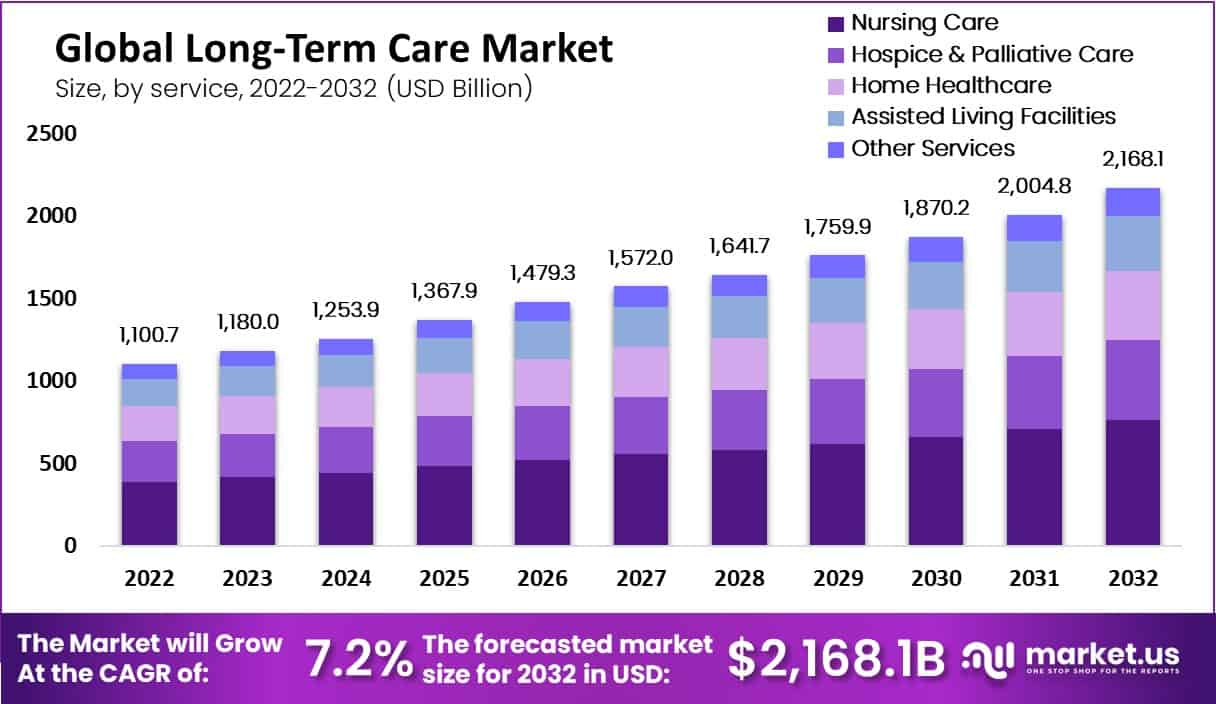
Global Diseases Burden Statistics
Burden of Diseases Worldwide
- In 2020 and 2021, the burden of disease measured in Disability-Adjusted Life Years (DALYs) per 100,000 individuals varied across different regions.
- In the African Region, DALYs increased from 56,186.6 in 2020 to 59,266.6 in 2021.
- The Eastern Mediterranean region saw a rise from 42,745.6 to 44,365.1 during the same period.
- Southeast Asia experienced an increase from 38,327.5 in 2020 to 39,996.7 in 2021.
- In the Americas, the DALYs grew from 30,362.1 to 31,417.5, while the European Region witnessed an increase from 25,990.0 to 26,948.6.
- The Western Pacific region also saw a slight rise from 23,268.3 in 2020 to 23,550.2 in 2021.

Global Diseases Burden – By Cause
- The total disease burden by cause has shown notable trends from 2015 to 2021.
- In 2015, injuries accounted for 10.12% of the total disease burden, communicable, maternal, neonatal, and nutritional diseases contributed 29.43%, and non-communicable diseases (NCDs) made up 60.46%.
- This pattern persisted in 2021, with injuries further reducing to 8.83%, communicable diseases increasing to 29.61%, and NCDs dropping slightly to 61.56%.
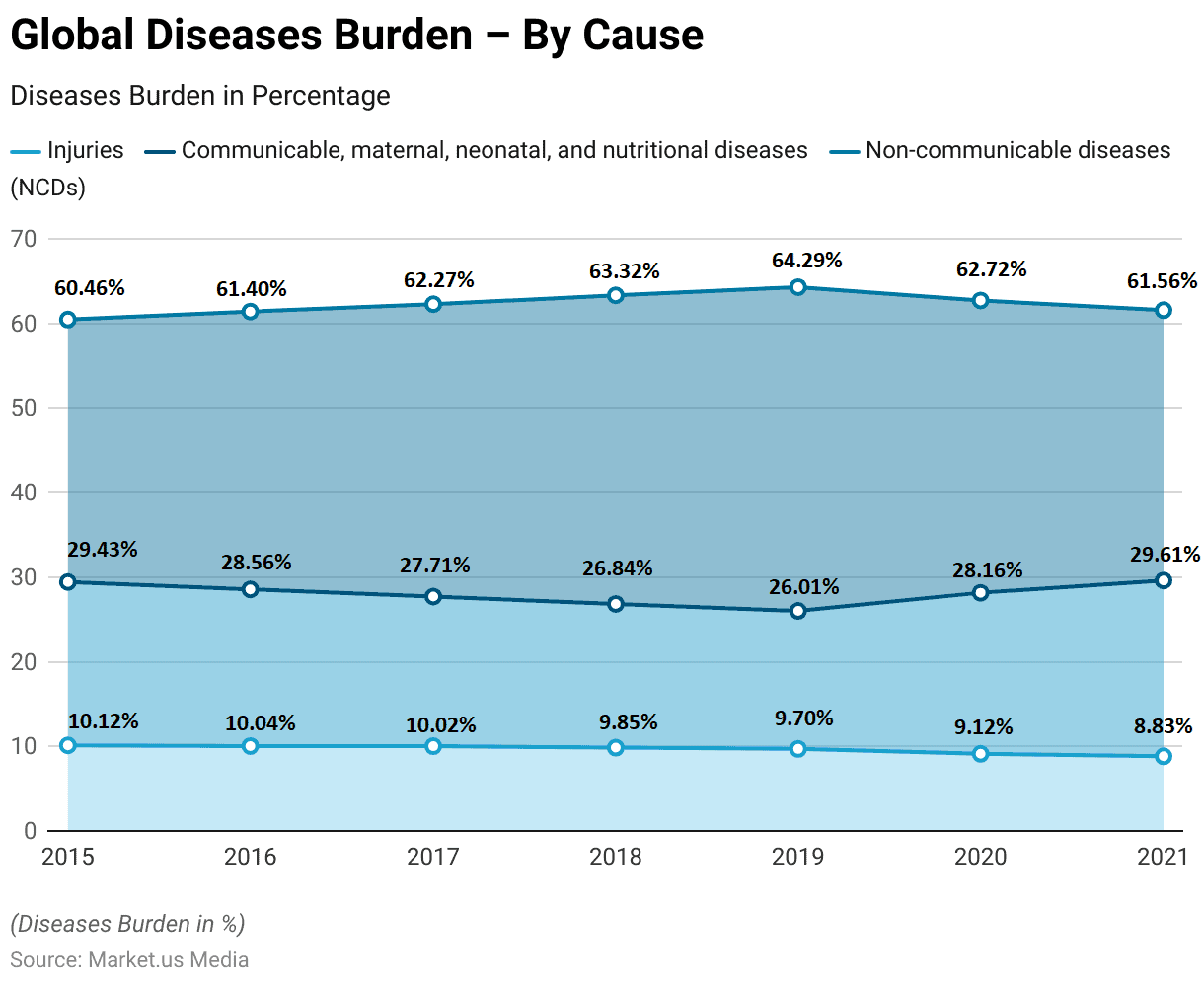
Leading Causes of Death Worldwide
Overall Causes
- The leading causes of death globally are varied, with ischaemic heart disease being the most significant, accounting for 7.25 million deaths or 12.8% of total deaths.
- Stroke and other cerebrovascular diseases follow closely, with 6.15 million deaths, representing 10.8%.
- Lower respiratory infections cause 3.46 million deaths, making up 6.1% of the total.
- Chronic obstructive pulmonary disease results in 3.28 million deaths (5.8%), while diarrhoeal diseases account for 2.46 million deaths (4.3%).
- HIV/AIDS contributes to 1.78 million deaths, or 3.1%.
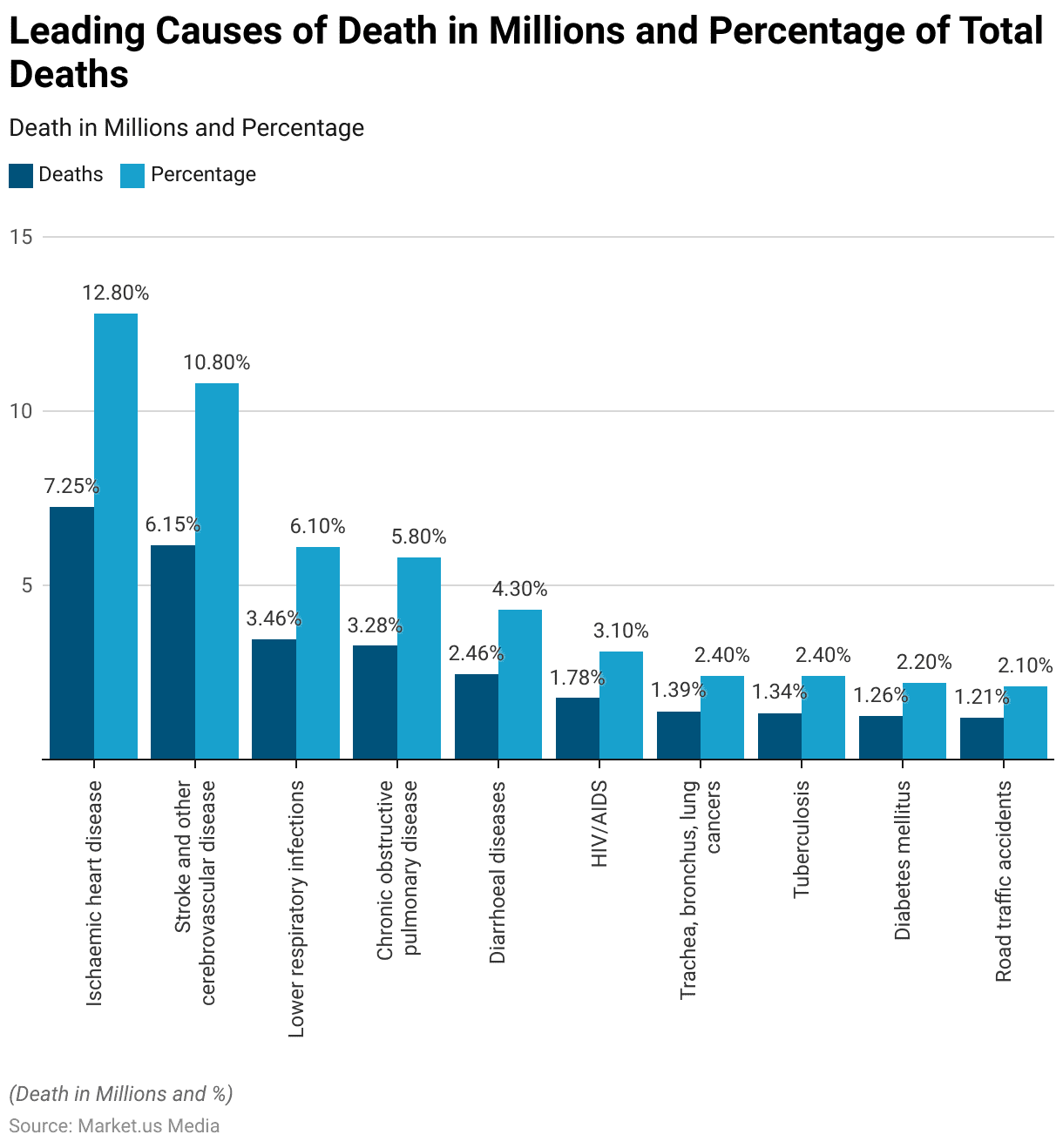
Share of Total Disease Burden – By Cause
- In 2021, the share of the total disease burden worldwide was dominated by various causes.
- Cardiovascular diseases were the leading cause, accounting for 14.9% of the total disease burden.
- Respiratory infections and tuberculosis (TB) followed closely, contributing 12.10%.
- Cancers accounted for 8.80% of the disease burden, while COVID-19 was responsible for 7.40%.
- Neonatal disorders contributed 6.50%, and musculoskeletal disorders accounted for 5.60%.
- Mental disorders made up 5.40%, and other non-communicable diseases (NCDs) comprised 4.90%.
- Diabetes and kidney diseases were responsible for 4.30% of the disease burden, with neurological disorders at 3.90% and respiratory diseases at 3.80%.
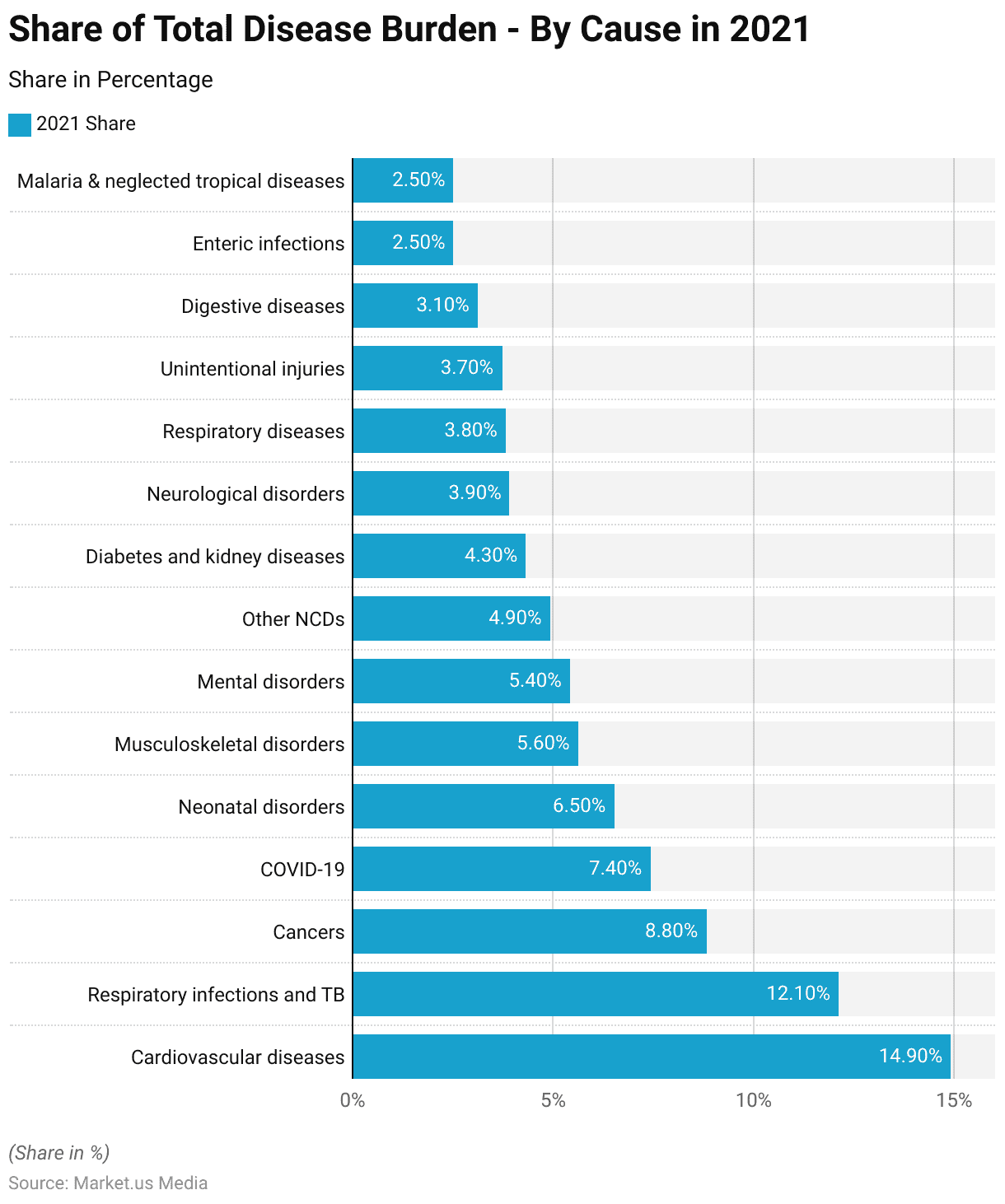
Non-Communicable Diseases Statistics
DALY Rates from Non-Communicable Diseases (NCDs)
- The Disability-Adjusted Life Years (DALY) rates due to Non-Communicable Diseases (NCDs) for various countries and regions show significant changes from 1990 to 2021.
- Overall, many countries experienced a reduction in DALY rates, indicating improvements in health outcomes despite global challenges.
- For instance, countries like Afghanistan, Algeria, and Andorra saw declines of around 20-30%, demonstrating effective healthcare interventions and public health strategies.
- Conversely, some areas like Bahrain and Cyprus witnessed larger declines of over 30%, suggesting robust healthcare improvements.
Burden from Non-Communicable Diseases – By Sub-Category
- The global disease burden from non-communicable diseases (NCDs) has shown a notable increase across various categories from 2017 to 2021, measured in Disability-Adjusted Life Years (DALYs) lost.
- Liver disease saw a gradual rise from 45.88 million DALYs in 2017 to 46.42 million in 2021.
- Mental disorders experienced a significant increase, from 134.72 million DALYs in 2017 to 155.42 million in 2021.
- Respiratory diseases also saw a steady rise from 102.13 million DALYs in 2017 to 108.50 million in 2021.
- Neurological disorders increased from 104.03 million DALYs in 2017 to 112.03 million in 2021.
- Cardiovascular diseases, the highest contributor, escalated from 404.69 million DALYs in 2017 to 428.33 million in 2021.
- Skin diseases slightly increased from 40.44 million DALYs in 2017 to 41.94 million in 2021.
- Substance use disorders saw a modest rise from 31.00 million DALYs in 2017 to 32.54 million in 2021.
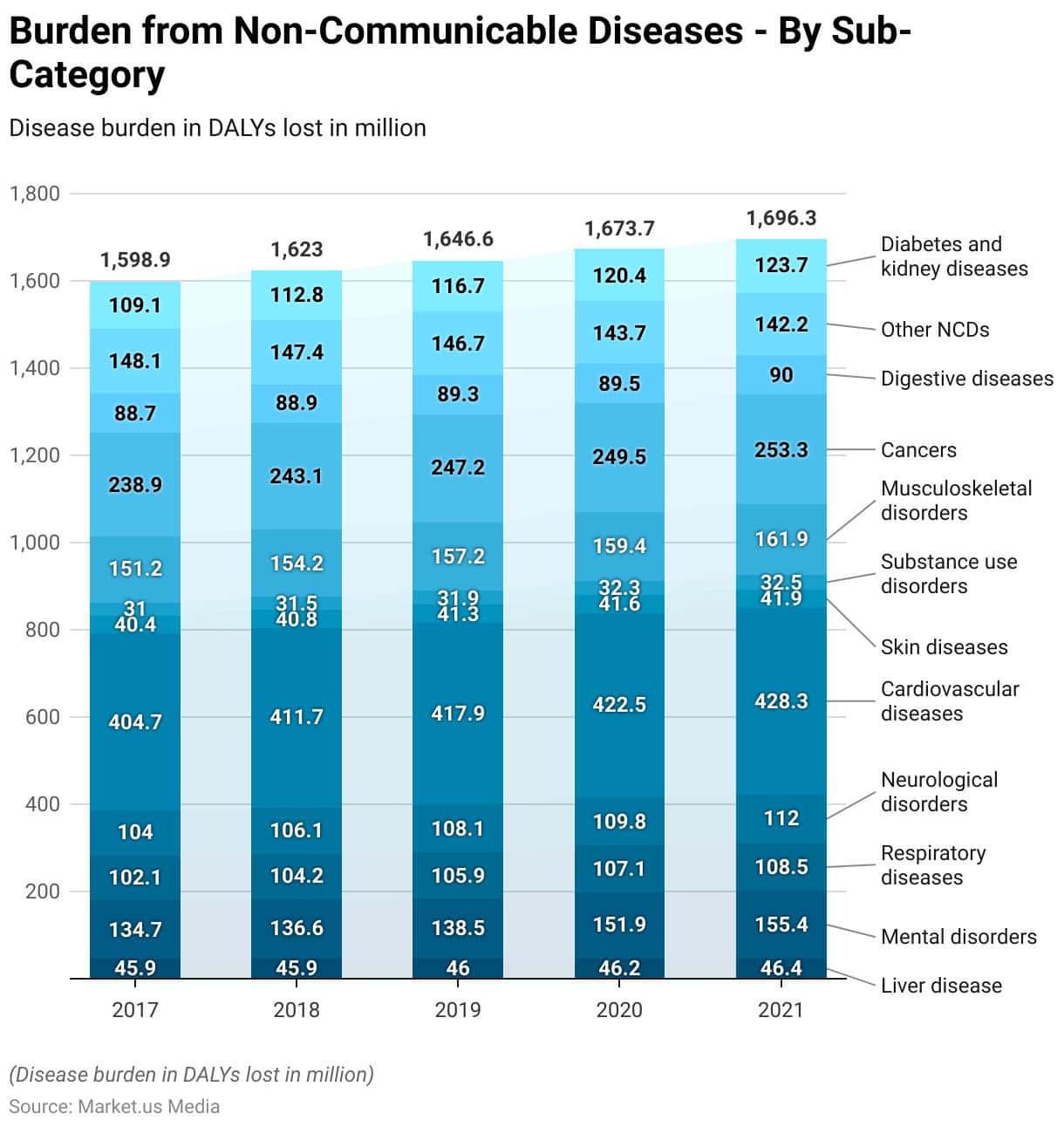
Distribution of Deaths Due to Non-Communicable Diseases
- As of 2012, the global distribution of deaths due to non-communicable diseases (NCDs) was dominated by cardiovascular diseases, which accounted for 37% of all NCD-related deaths.
- Malignant neoplasms followed, contributing to 27% of deaths.
- Respiratory diseases were responsible for 8% of the deaths, while diabetes mellitus accounted for 4%.
- Other non-communicable diseases made up the remaining 23% of deaths.
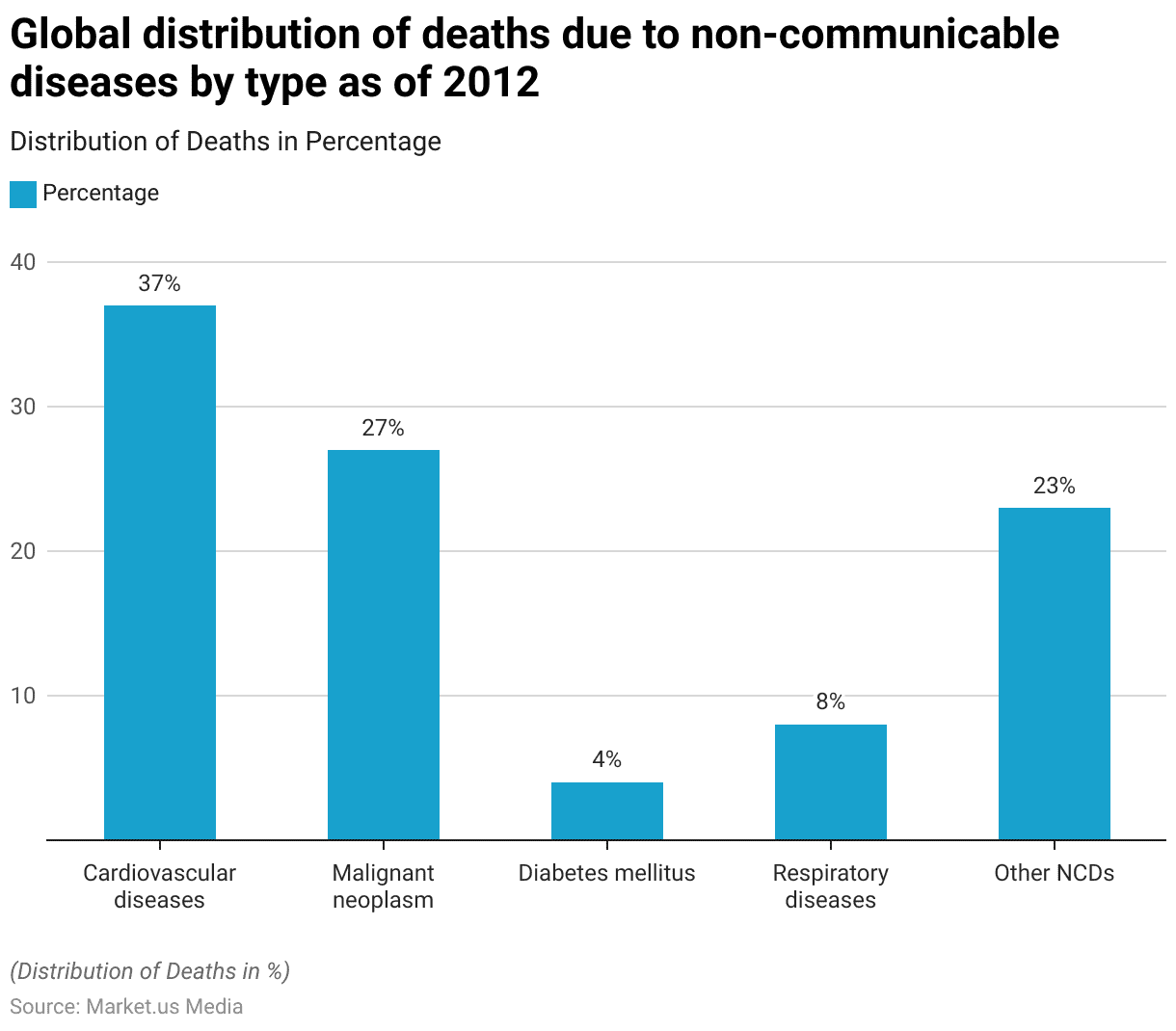
Disease Burden from Non-Communicable Diseases – By Age
- The distribution of the global disease burden from non-communicable diseases (NCDs) by age group from 2017 to 2021 reveals significant trends.
- Among those aged 70 and above, the burden increased from 26.73% in 2017 to 27.99% in 2021.
- For individuals aged 56 to 69, the burden showed a slight but consistent rise from 34.33% in 2017 to 34.93% in 2021.
- The age group 15 to 49 experienced a gradual decrease, from 30.60% in 2017 to 29.97% in 2021.
- The burden among children aged 5 to 14 remained relatively stable, decreasing slightly from 3.31% in 2017 to 3.19% in 2021.
- For children under 5, there was a notable decline from 5.03% in 2017 to 3.93% in 2021.

Prevalence of Non-Communicable Diseases and Risk Factors Among Working Women
- The prevalence of non-communicable diseases (NCDs) and their risk factors among working women shows significant variability.
- Coronary heart disease has the lowest prevalence, ranging from 0.3% to 5.9%.
- Diabetes mellitus affects between 8.9% and 16.0% of working women.
- Hypertension is notably prevalent, with rates ranging from 16.6% to 66.4%.
- Dyslipidemia prevalence varies between 27.8% and 44.0%.
- Overweight and obesity rates are particularly high, ranging from 33.8% to 77.0%.
- Additionally, an unhealthy diet is prevalent among 44.9% to 69.9% of working women.
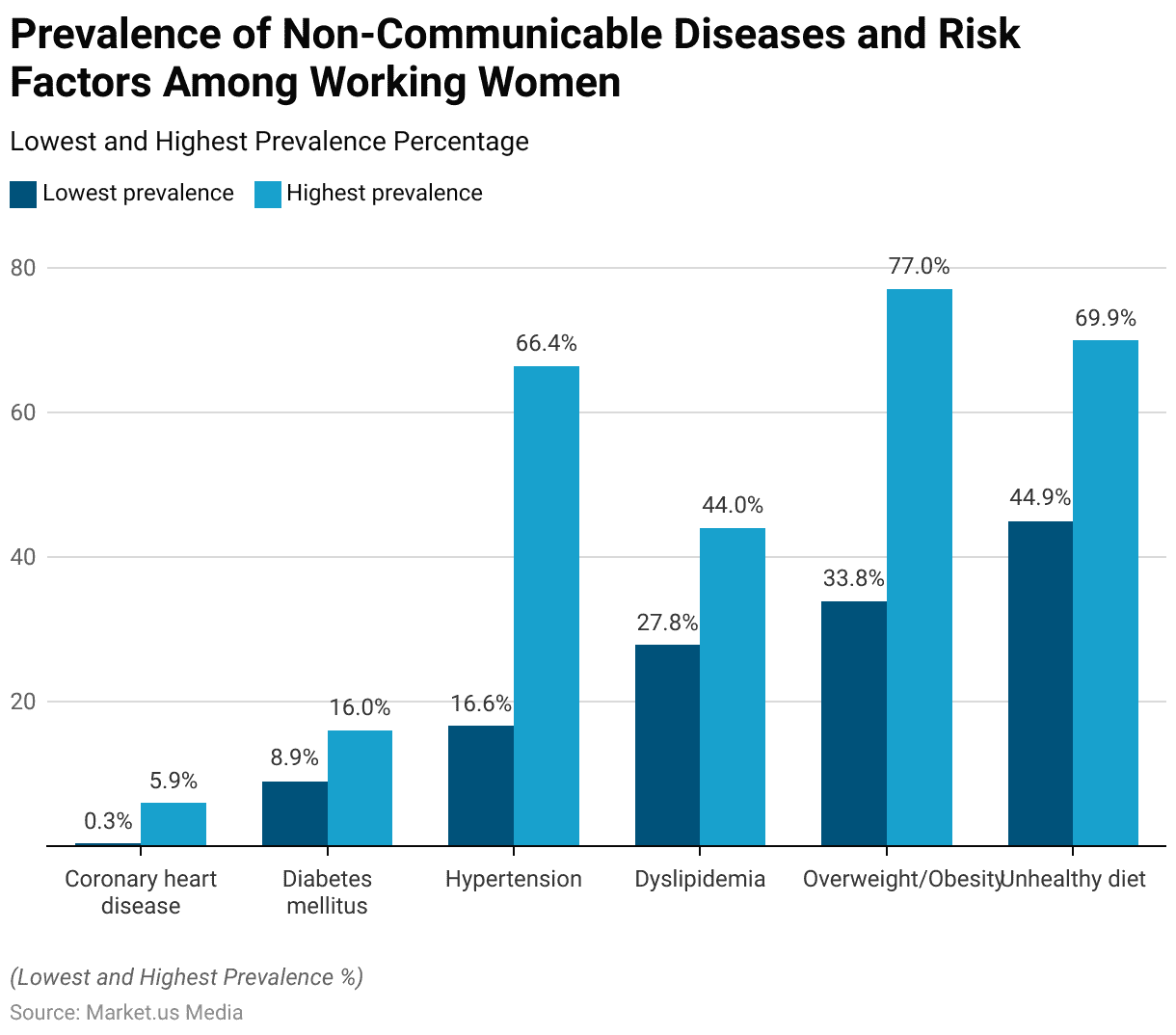
Communicable Diseases Statistics
Global Communicable, Neonatal, Maternal, and Nutritional Disease Burden – By Specific Cause
- The global disease burden from communicable, neonatal, maternal, and nutritional diseases has shown varying trends from 2017 to 2021, measured in Disability-Adjusted Life Years (DALYs) lost.
- Maternal disorders saw a gradual decline from 13.56 million DALYs in 2017 to 12.31 million in 2021.
- Nutritional deficiencies also decreased, from 52.98 million DALYs in 2017 to 48.92 million in 2021.
- Other infectious diseases experienced a significant reduction from 60.7 million DALYs in 2017 to 41.58 million in 2021.
- Similarly, the burden of HIV/AIDS and STIs dropped from 55.14 million DALYs in 2017 to 48.22 million in 2021.
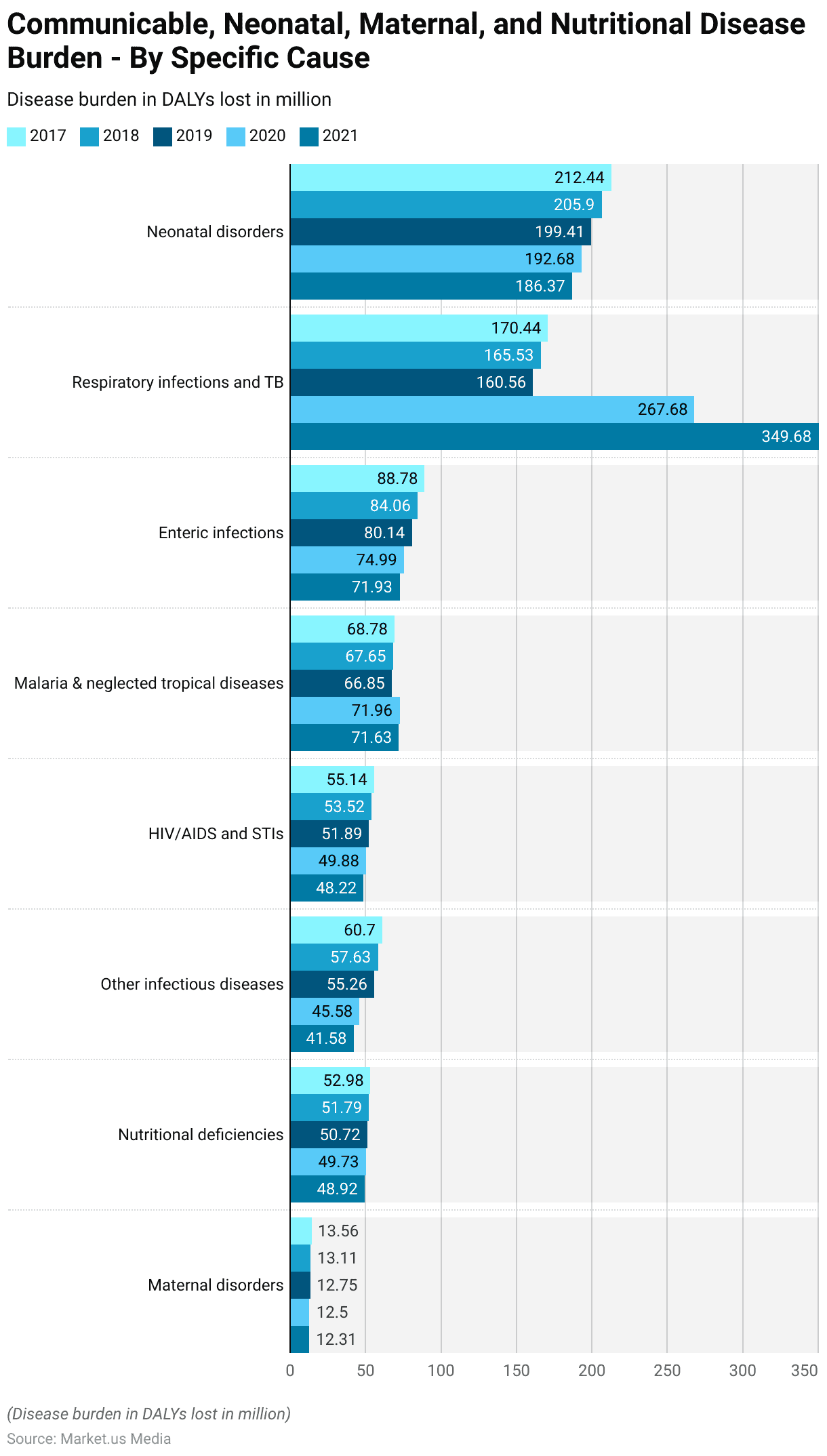
Global Communicable, Neonatal, Maternal, and Nutritional Disease Burden – By Age
- The disease burden from communicable, neonatal, maternal, and nutritional diseases by age group from 2017 to 2021 exhibits distinct trends.
- In individuals aged 70 and above, the burden increased from 4.91% in 2017 to 11.11% in 2021.
- For those aged 56 to 69, the burden rose from 7.77% in 2017 to 16.81% in 2021.
- The age group 15 to 49 saw an increase from 20.60% in 2017 to 24.87% in 2021.
- Conversely, the burden for children aged 5 to 14 remained relatively stable, decreasing slightly from 6.89% in 2017 to 5.59% in 2021.
- The most significant decrease was observed in children under 5, where the burden dropped from 59.83% in 2017 to 41.62% in 2021.
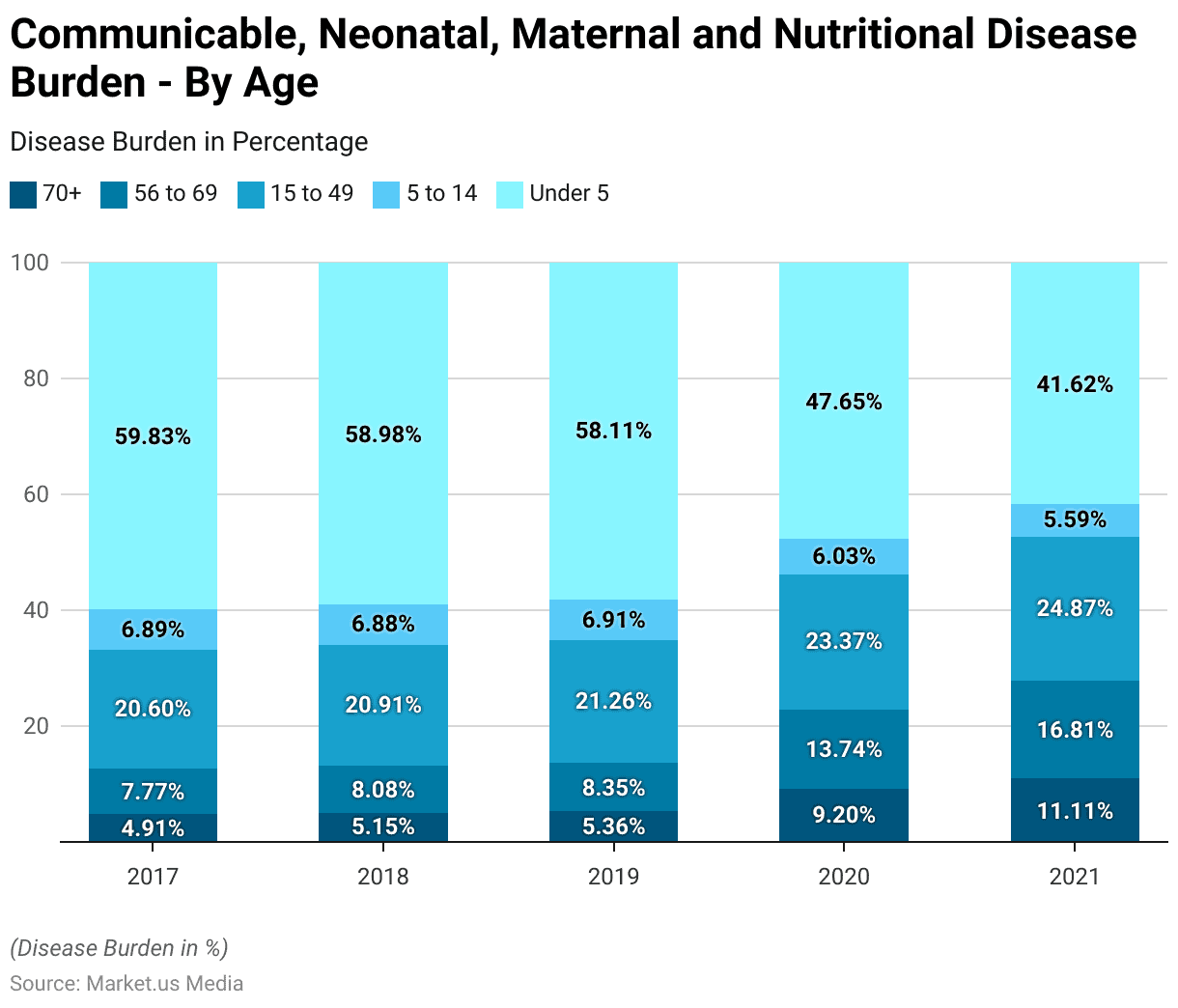
Rare Diseases Statistics
Prevalence Rate of Selected Rare Diseases Worldwide
- As of 2017, the prevalence rates of selected rare diseases worldwide, measured per 100,000 population, vary significantly.
- Multiple Sclerosis has the highest prevalence, affecting 90 per 100,000 people.
- Narcolepsy follows with a prevalence rate of 50 per 100,000, while Primary Biliary Cholangitis affects 40 per 100,000.
- Fabry Disease has a prevalence of 30 per 100,000, and Cystic Fibrosis affects 25 per 100,000 individuals.
- Hemophilia has a prevalence of 20 per 100,000, with Spinal Muscular Atrophy and Retinal Dystrophy each affecting 13 per 100,000.
- X-linked hypophosphatemia has a prevalence rate of 5 per 100,000, and Urea Cycle Disorders, Pulmonary Arterial Hypertension, and Cerebral Adrenoleukodystrophy each affect 3 per 100,000 people.

Genetic Diseases Statistics
- Single-gene diseases, such as Achondroplasia, Beta-thalassemia, Cystic fibrosis, Fragile X syndrome, Huntington’s disease, Sickle cell disease (SCD), and Hemophilia, exhibit varying rates of occurrence across different populations.
- Achondroplasia, causing short-limbed dwarfism, occurs in approximately 1 in 15,000 to 40,000 births.
- Beta-thalassemia, prevalent among those from Mediterranean, North African, Middle Eastern, Indian, Central Asian, and Southeast Asian backgrounds, affects a significant portion of these populations.
- Cystic fibrosis, characterized by respiratory and digestive complications, varies with 1 in 2500 to 3500 White Americans, 1 in 17,000 African Americans, and 1 in 31,000 Asian Americans affected.
- Fragile X syndrome, leading to developmental issues, affects about 1 in 4000 males and 1 in 8000 females.
- Huntington’s disease, causing progressive brain disorders, occurs at rates of 3 to 7 per 100,000 people of European descent, less commonly in Japanese, Chinese, and African populations.
Global Spending on Diseases and Disorders
Spending on Medicine – According to Country
- By 2026, projected spending on medicine in selected countries worldwide is expected to vary significantly.
- In the United States, the maximum spending estimate is projected to reach $715 billion, with a minimum estimate of $685 billion.
- China is expected to spend between $190 billion and $220 billion.
- Germany’s spending is projected to range from $76 billion to $96 billion, while Japan’s estimates fall between $75 billion and $93 billion.
- France’s spending is projected to be between $48 billion and $52 billion, and Brazil is expected to spend between $47 billion and $51 billion.
- In the United Kingdom, the projected spending ranges from $46 billion to $50 billion.
- Italy is estimated to spend between $41 billion and $45 billion, and India between $37 billion and $41 billion.
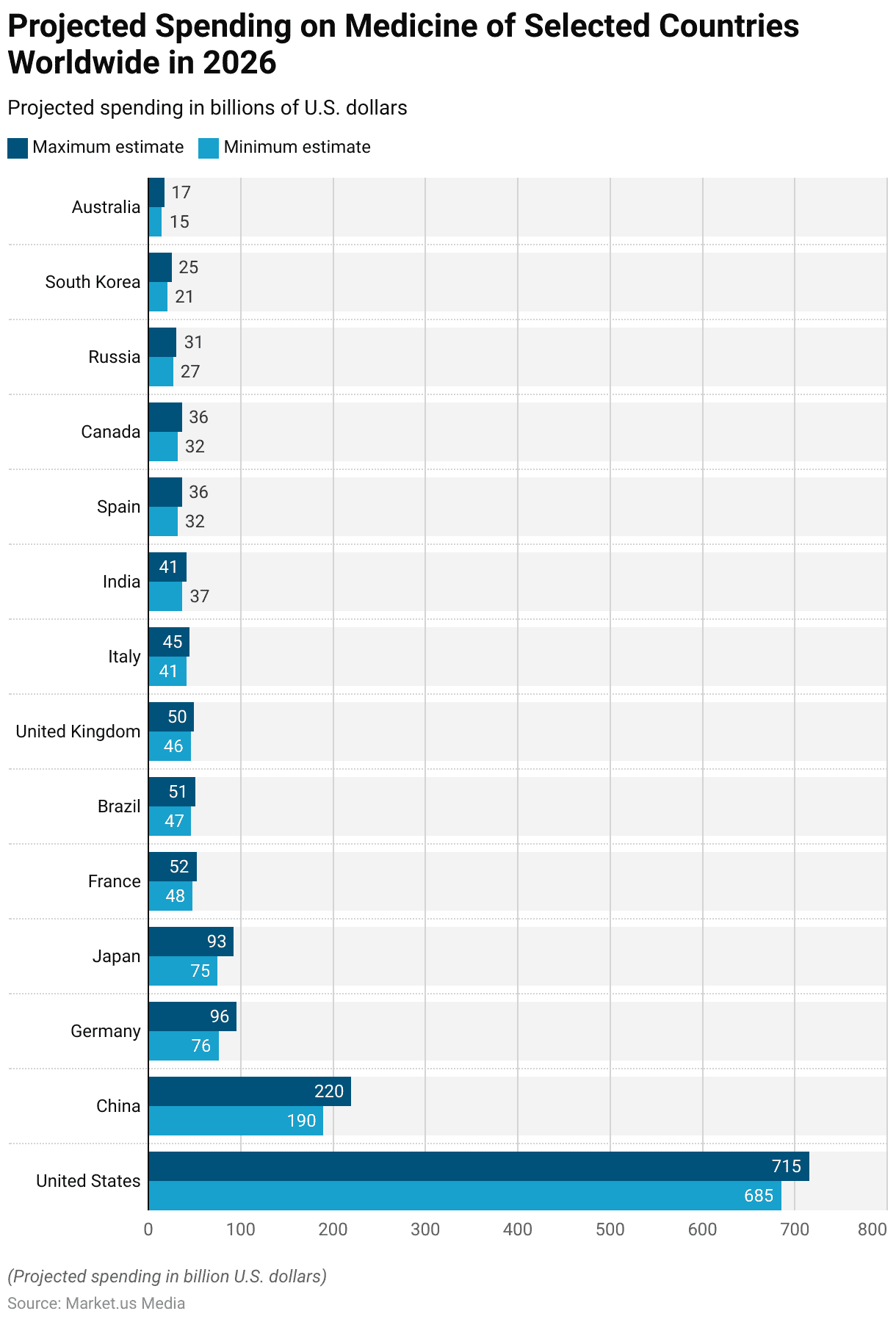
Global Autoimmune Disorders Spending
- From 2011 to 2023, global spending on autoimmune disorders has seen a substantial increase. In 2011, the expenditure was $23 billion, rising to $28 billion in 2012.
- The trend persisted, with spending rising to $127 billion in 2021, $141 billion in 2022, and finally $149 billion in 2023.
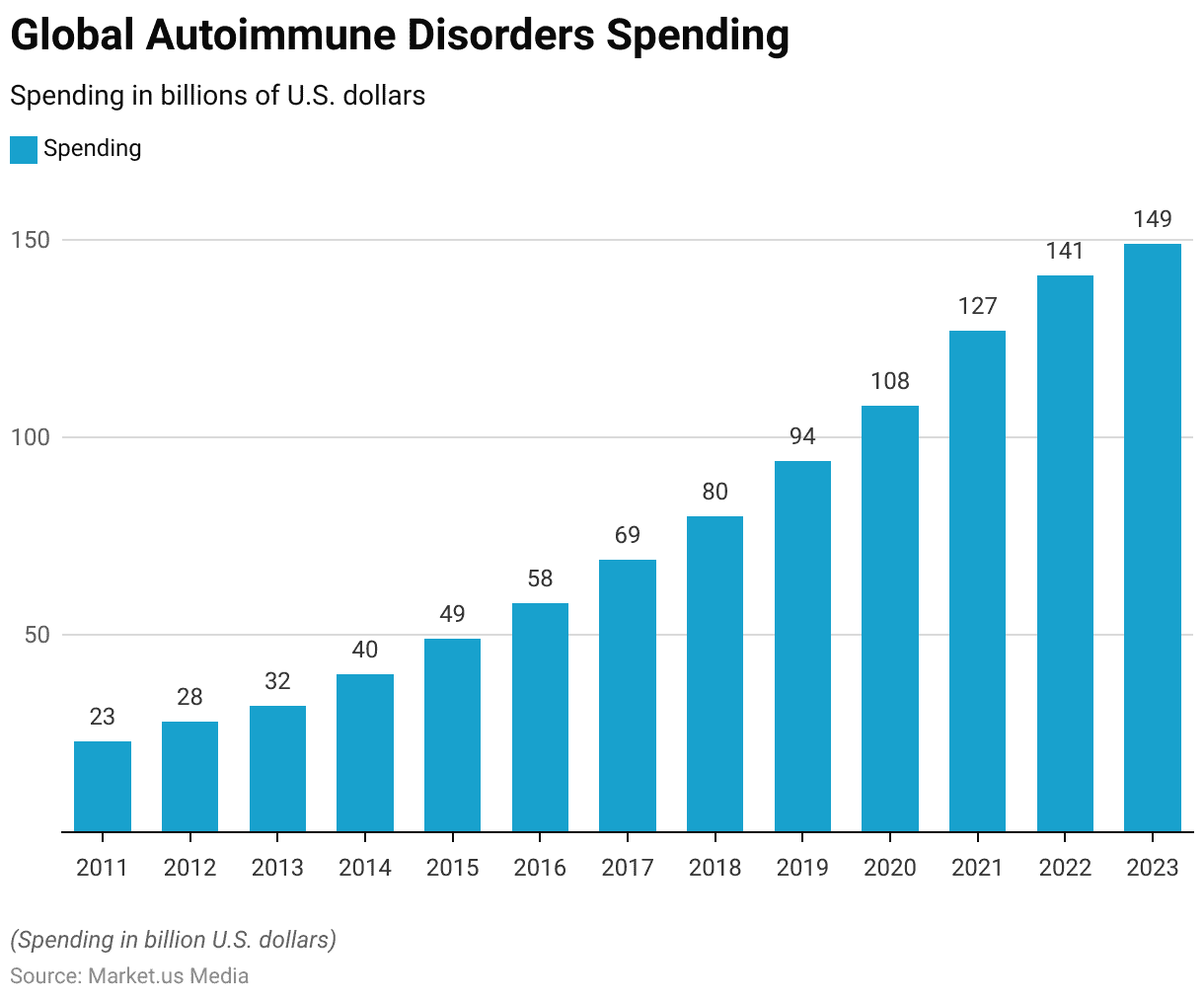
Research and Development Spending
- In 2022, a total of $3,931 million was donated for research and development across various diseases.
- The largest share was allocated to HIV/AIDS, receiving $1,352 million. Tuberculosis research received $702 million, followed by malaria with $604 million.
- Diarrhoeal diseases were allocated $156 million, while kinetoplastids received $123 million.
- Worms and flukes research was funded with $104 million, and dengue received $82 million. Salmonella infections and bacterial pneumonia/meningitis were allocated $80 million and $48 million, respectively.
- Hepatitis B research received $30 million, and snakebite envenoming was funded with $21 million. Hepatitis C and leprosy received $16 million and $14 million, respectively.
- Lesser-funded areas included cryptococcal meningitis ($6.6 million), histoplasmosis ($3.4 million), rheumatic fever ($3.4 million), scabies ($1.9 million), leptospirosis ($1.2 million), Buruli ulcer ($0.6 million), mycetoma ($0.5 million), and trachoma ($0.2 million).
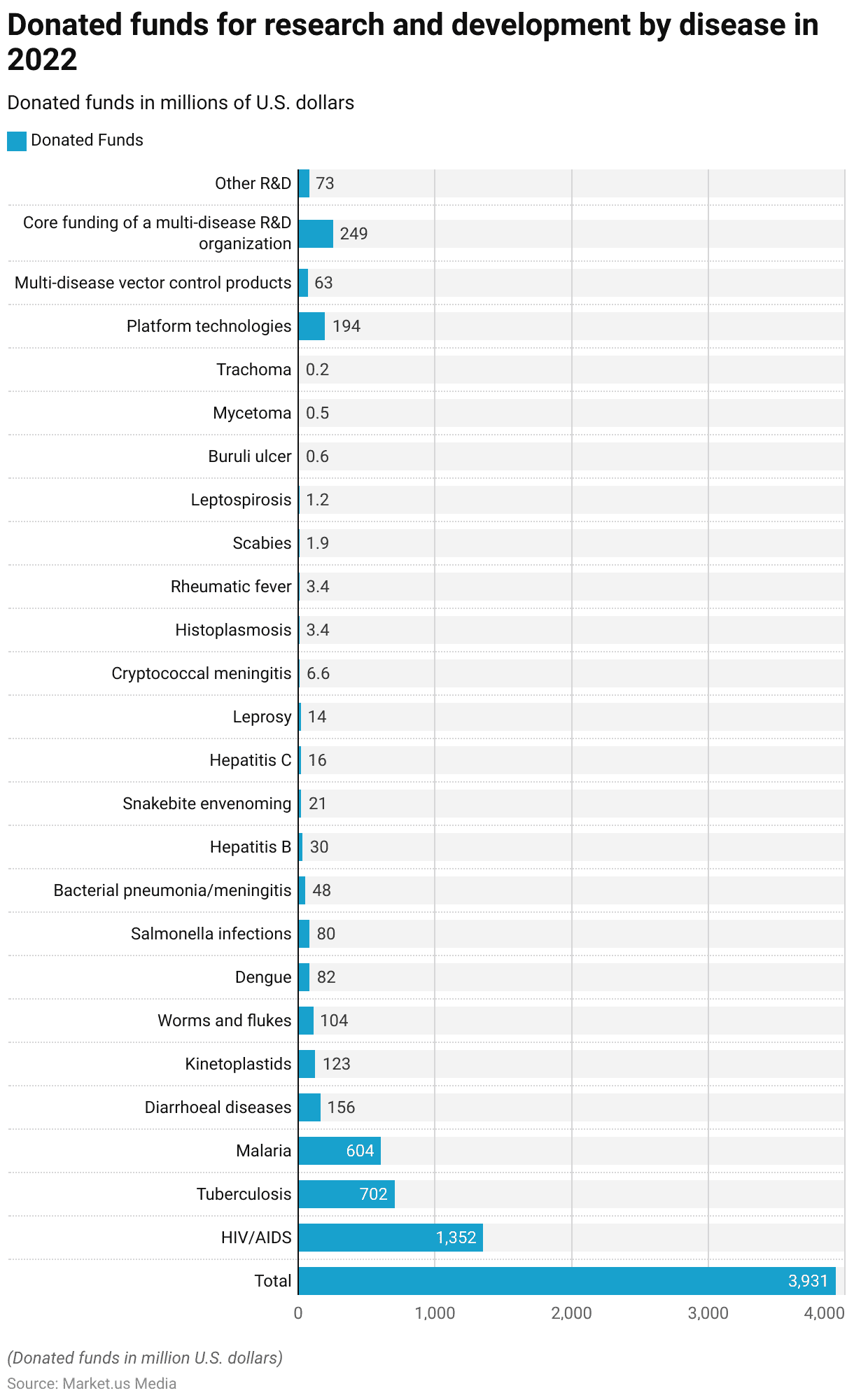
Initiatives for Disease Prevention
- In 2023, several key initiatives for disease prevention have been implemented globally, focusing on reducing the incidence and impact of various diseases through coordinated efforts.
- The Healthy People 2030 initiative by the U.S. Department of Health and Human Services sets data-driven national objectives to improve health and well-being over the next decade, emphasizing equitable long-term recovery and resilience, health literacy, and nutrition and physical activity guidelines.
- Additionally, the American College of Preventive Medicine (ACPM) has launched multiple programs aimed at chronic disease prevention, including initiatives targeting brain health, diabetes prevention, hypertension reduction, and cancer prevention.
Take advantage of our unbeatable offer - buy now!

Discuss your needs with our analyst
Please share your requirements with more details so our analyst can check if they can solve your problem(s)



